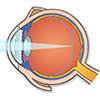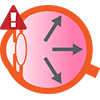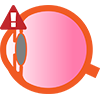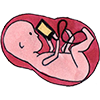- 284 Mud St W, Hamilton, ON L8J 3Z6, Canada
- Mon & Wed (11am – 6pm)
- Tue, Thu, Fri (11am - 7pm)
- Saturday (10am - 4pm)

Myopia is the inability to see far (nearsightedness), and it is due to an eye that is longer than normal from the front to the back, or the cornea (the clear window at the front of the eye) is too steeply curved. Usually myopia is corrected with glasses, contact lenses or surgery in some cases.
Myopia is a growing concern all around the world, children should be treated young and encouraged to go outside and use screens as little as possible.
Myopia prevalence is increasing around the world at an alarming rate. If present trends continue, 50% of the world’s population is predicted to be myopic by 2050. The prevalence of myopia in North America has increased 50% over the last two decades. Among Canadian school children aged 11-13, almost 30% are myopic. In Asian countries, the prevalence is reaching epidemic proportions with 70% to 80% of teenagers being myopic.
Myopic eyes result in excessive eye length making increasing risks of developing ocular pathologies, such as myopic macular degeneration, retinal holes that can lead to a retinal detachment, glaucoma, and cataract, which increases significantly with an increasing magnitude of myopia. If left untreated, Myopia, might progress into high myopia (>6 diopters)
The incidence of myopia is expected to increase significantly as lifestyles change, with children taking part in more near-focused activities like using digital devices, studying, and reading, and spending less time outdoors. Hereditary, behavioural, and environmental factors also play a part in it.

Several clinical methods are currently used for myopia control in children, studies have demonstrated a decrease in progression of approximately 50-60% with different treatments.
These treatments include:
In our office we offer the following options for Myopia control:
Myopia is blurry long-distance vision, often called “short-sighted’’ or “near-sighted”. A person with myopia can see clearly up close – when reading a book or looking at a phone – but words and objects look fuzzy on a blackboard, on television or when driving. But a pair of glasses aren’t the whole story.
The prevalence among Australian 12 year olds has doubled in 6 years. Myopia in kids tends to progress or get worse throughout childhood, and higher levels of myopia are associated with higher eye disease risks in adulthood. If your child already wears glasses, you can do something to stop their vision worsening. If they don’t you can assess their risk of developing myopia.





























We are dedicated to going above and beyond in ensuring that you receive the highest quality care available.